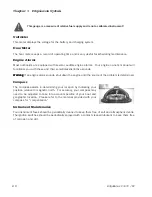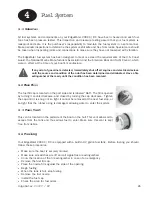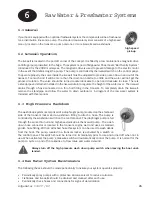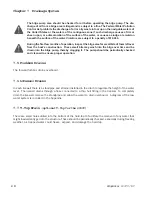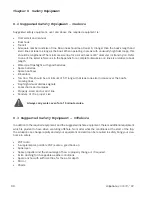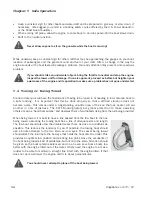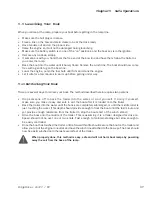
Chapter 9 Safe Operation
3 2
EdgeWater 200CC / DC
After Starting the Engine
•
Upon initial start-up, make sure to follow the manufacturer’s recommendations for engine break-in
•
Check to be sure there is a tell-tale water stream exiting the engine.
•
Check the gauges to determine if everything is nominal.
•
Check to make sure everything is secure and properly stowed away; remember the boat’s
movement is dynamic and anything that is loose will become a hazard at the worst possible
time.
•
Have a great time on the water
Remember that the captain is responsible for the safety of the crew and passengers and for
his/her boat’s wake damage.
Never operate the boat while under the influence of alcohol!
•
Make sure someone else on-board knows how to operate the boat in the event you are injured
and unable to operate the boat.
If you are operating the boat for the first time, make sure you follow the engine manufacturer’s
break-in recommendations. This will assure proper break-in and reduce the possibility of
engine problems.
9.2 Basic Rules of the Road
The following is not intended to be a comprehensive course in seamanship and rules of the road,
but instead an introduction. It is strongly recommended that a boating safety course be taken
from your local Coast Guard Auxiliary or local Department of Natural Resources. There are also
many good reference books in your local library as well as numerous sites on the internet.
Remember, paddle boats, sailboats and other vessels (such as barges) which are unable to
maneuver, always have the right of way over powerboats. Sail boats, when under power,
are considered motor boats. However, always boat defensively.
Aids to Navigation
Along the coast lines and in navigable inland waters, aids to navigation have been placed by the U.S. Coast
Guard. These have been placed for the boating public’s safety. Please become familiar with them and
learn to use them to make your boating safer and more fun.





